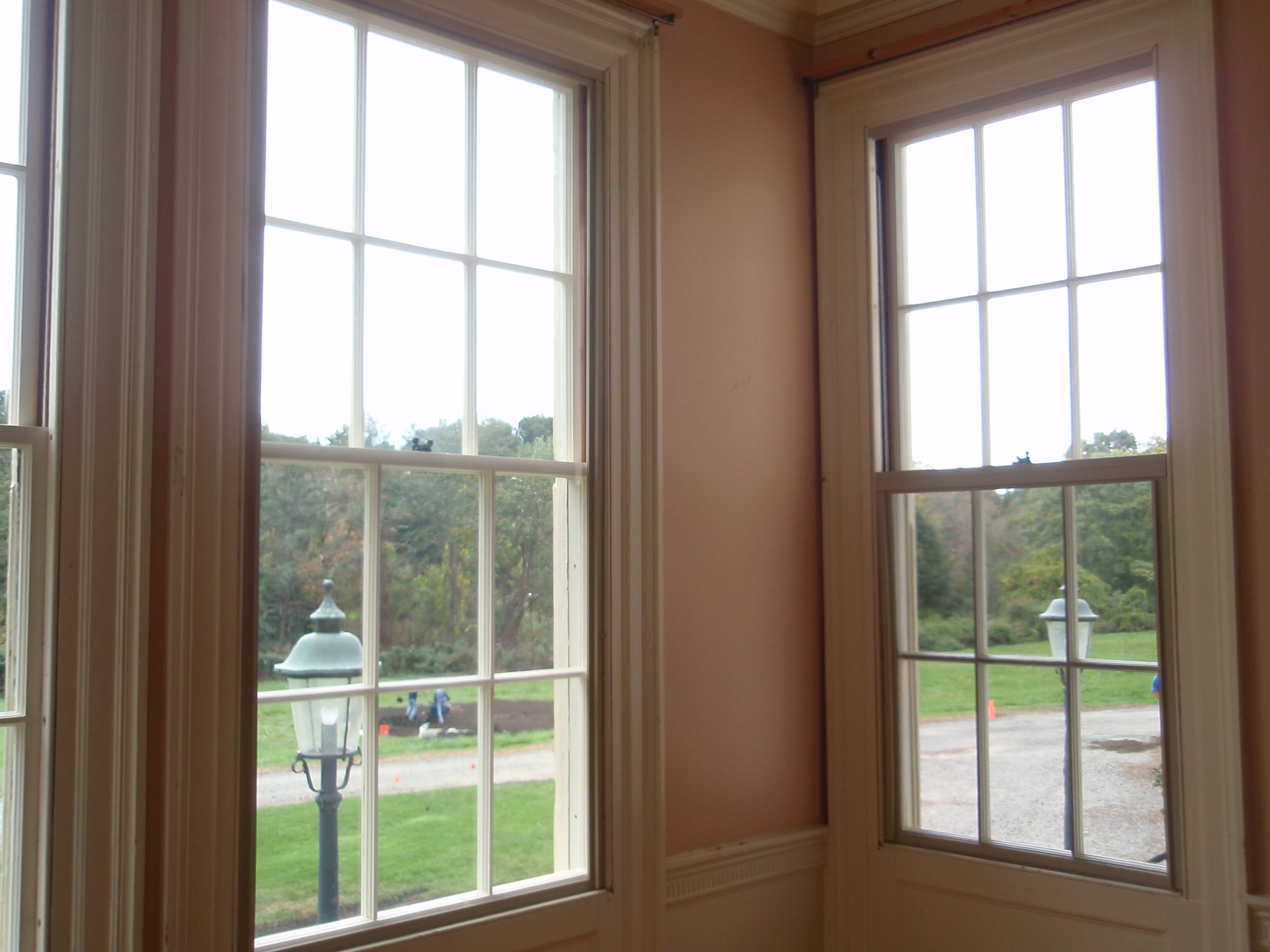Historic New England decided to do an energy retrofit project on their headquarters, The Lyman Estate.
This was done in concert with the Massachusetts Dept of Energy Resources. The Massachusetts Historical Commission holds a preservation restriction on the property, so the exterior cannot be changed. Historic New England decided to do interior storm windows in a minimally invasive manner. Their institutional philosophy was when installing non-historic elements, such as storm windows, or more commonly, UV protection in the museum buildings, was to install these elements in the interior as opposed to the exterior. This approach stems from the concept that guests rarely noticed an interior storm window, but on the exterior of the building, these additions are very noticeable- specifically it preserves the aesthetic quality of how the light is reflected off the individual panes of the historic window compared to light reflecting off a single storm pane.
After the Innerglass windows were installed, the Historic New England staff did a series of blower door tests. Their tests found an overall decrease in infiltration of 30% in each room tested. Taking out the Innerglass storms reduced it to 10% so 2/3rds of the infiltration improvement can be attributed to the interior storms. To get this correct, we have quoted several sections directly from the report written by Historic New England.

